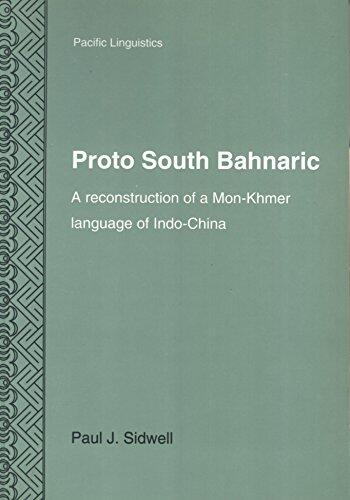
Proto South Bahnaric: A Reconstruction of a Mon-Khmer Language of Indo-China
还没有评分
格式
平装书
页数
225
语言
英语
已发布
Jan 1, 2000
出版商
Research School of Pacific and Asian Studies, Australian National University
ISBN-10
0858834448
ISBN-13
9780858834446
描述
In this scholarly work, Paul J. Sidwell meticulously delves into the reconstruction of the Proto South Bahnaric language, a member of the Mon-Khmer family spoken in Indo-China. His research showcases not just the linguistic features of this lesser-known language, but also explores its significance in understanding historical and cultural connections within the region.
Sidwell employs a range of methodologies to piece together the phonological, morphological, and syntactical elements of Proto South Bahnaric, crafting a comprehensive linguistic profile. Through this reconstruction, he illuminates the relationship of the language to its relatives, providing valuable insights into the evolution of Mon-Khmer languages.
The work is rich with bibliographical references, demonstrating Sidwell's thorough engagement with existing literature. This makes it not only a critical resource for linguists but also an intriguing read for anyone interested in the complexities of language development and cultural exchange in Southeast Asia.
Overall, Sidwell's exploration opens the door to a deeper appreciation of the intricate tapestry of languages that define the region, highlighting the importance of preservation and understanding of minority languages in today's globalized world.
Sidwell employs a range of methodologies to piece together the phonological, morphological, and syntactical elements of Proto South Bahnaric, crafting a comprehensive linguistic profile. Through this reconstruction, he illuminates the relationship of the language to its relatives, providing valuable insights into the evolution of Mon-Khmer languages.
The work is rich with bibliographical references, demonstrating Sidwell's thorough engagement with existing literature. This makes it not only a critical resource for linguists but also an intriguing read for anyone interested in the complexities of language development and cultural exchange in Southeast Asia.
Overall, Sidwell's exploration opens the door to a deeper appreciation of the intricate tapestry of languages that define the region, highlighting the importance of preservation and understanding of minority languages in today's globalized world.